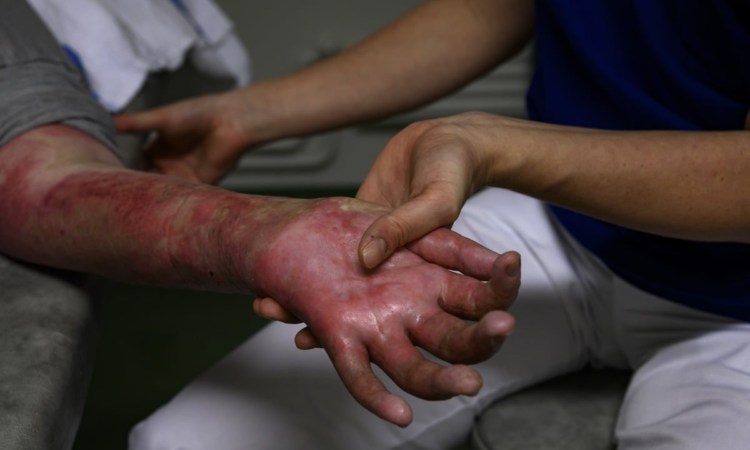
A burn is an injury to the skin or other organic tissue primarily caused by heat or due to radiation, radioactivity, electricity, friction or contact with chemicals.
Thermal (heat) burns occur when some or all the cells in the skin or other tissues are destroyed by:
Burns are a global public health problem, accounting for an estimated 180 000 deaths annually. The majority of these occur in low- and middle-income countries and almost two thirds occur in the WHO African and South-East Asia Regions.
In many high-income countries, burn death rates have been decreasing, and the rate of child deaths from burns is currently over 7 times higher in low- and middle-income countries than in high-income countries.
Non-fatal burns are a leading cause of morbidity, including prolonged hospitalization, disfigurement and disability, often with resulting stigma and rejection.
Direct care costs for burns vary widely but tend towards being generally expensive with a 2014 systematic review finding a mean total healthcare cost per burn patient of US$ 88 218 (range US$ 704–717 306).
In South Africa an estimated US$ 26 million is spent annually for care of burns from kerosene (paraffin) cookstove incidents. Indirect costs such as lost wages, prolonged care for deformities and emotional trauma, and commitment of family resources, also contribute to the socioeconomic impact.
Females have slightly higher rates of death from burns compared to males according to the most recent data. This contrasts with the usual injury pattern, where rates of injury for the various injury mechanisms tend to be higher in males than females.
The higher risk for females is associated with open fire cooking, or inherently unsafe cookstoves, which can ignite loose clothing. Open flames used for heating and lighting also pose risks, and self-directed or interpersonal violence are also factors (although understudied).
Along with adult women, children are particularly vulnerable to burns. Burns are the fifth most common cause of non-fatal childhood injuries. While a major risk is improper adult supervision, a considerable number of burn injuries in children result from child maltreatment.
There are important regional differences in burn rates.
People living in low- and middle-income countries are at higher risk for burns than people living in high-income countries. Within all countries however, burn risk correlates with socioeconomic status.
There are a number of other risk factors for burns, including:
Burns occur mainly in the home and workplace. Community surveys in Bangladesh and Ethiopia show that 80–90% of burns occur at home. Children and women are usually burned in domestic kitchens, from upset receptacles containing hot liquids or flames, or from cookstove explosions. Men are most likely to be burned in the workplace due to fire, scalds, chemical and electrical burns.
Burns are preventable. High-income countries have made considerable progress in lowering rates of burn deaths, through a combination of prevention strategies and improvements in the care of people affected by burns. Most of these advances in prevention and care have been incompletely applied in low- and middle-income countries. Increased efforts to do so would likely lead to significant reductions in rates of burn-related death and disability.
Prevention strategies should address the hazards for specific burn injuries, education for vulnerable populations and training of communities in first aid. An effective burn prevention plan should be multisectoral and include broad efforts to:
The document A WHO plan for burn prevention and care discusses these 7 components in detail.
In addition, there are several specific recommendations for individuals, communities and public health officials to reduce burn risk.
Basic guidance on first aid for burns is provided below.
WHO is promoting interventions that have been shown to be successful in reducing the incidence of burns.
The Organization is also supporting the development and use of a global burn registry for globally harmonized data collection on burns and increased collaboration between global and national networks to increase the number of effective programmes for burn prevention.
References
Related







